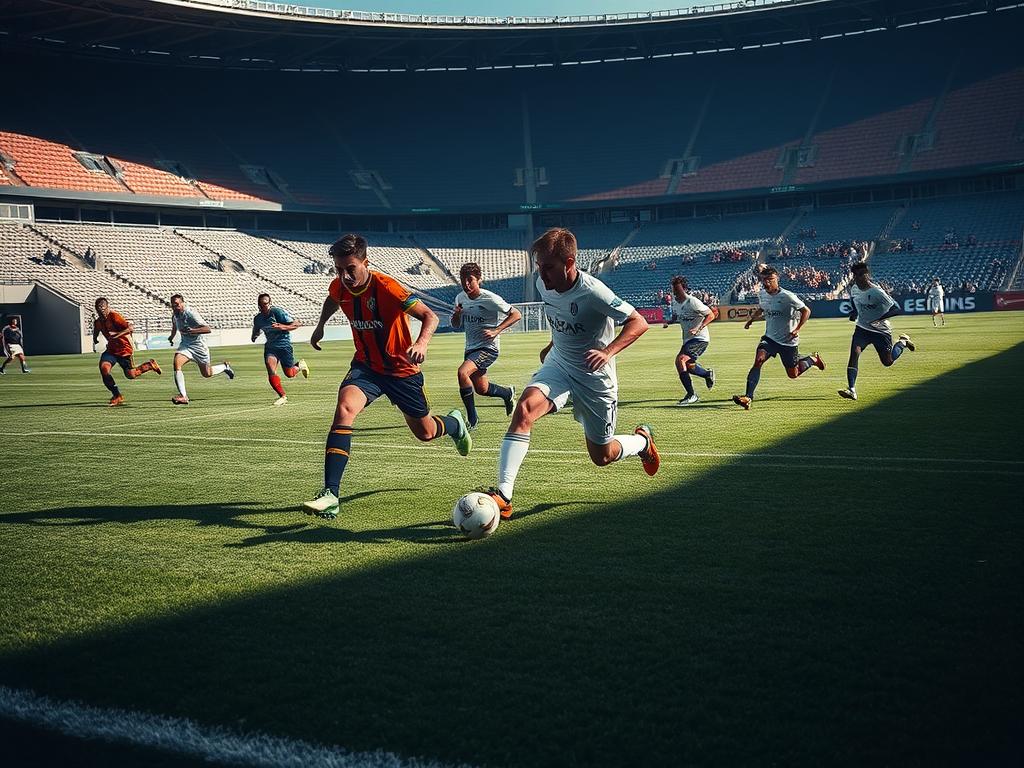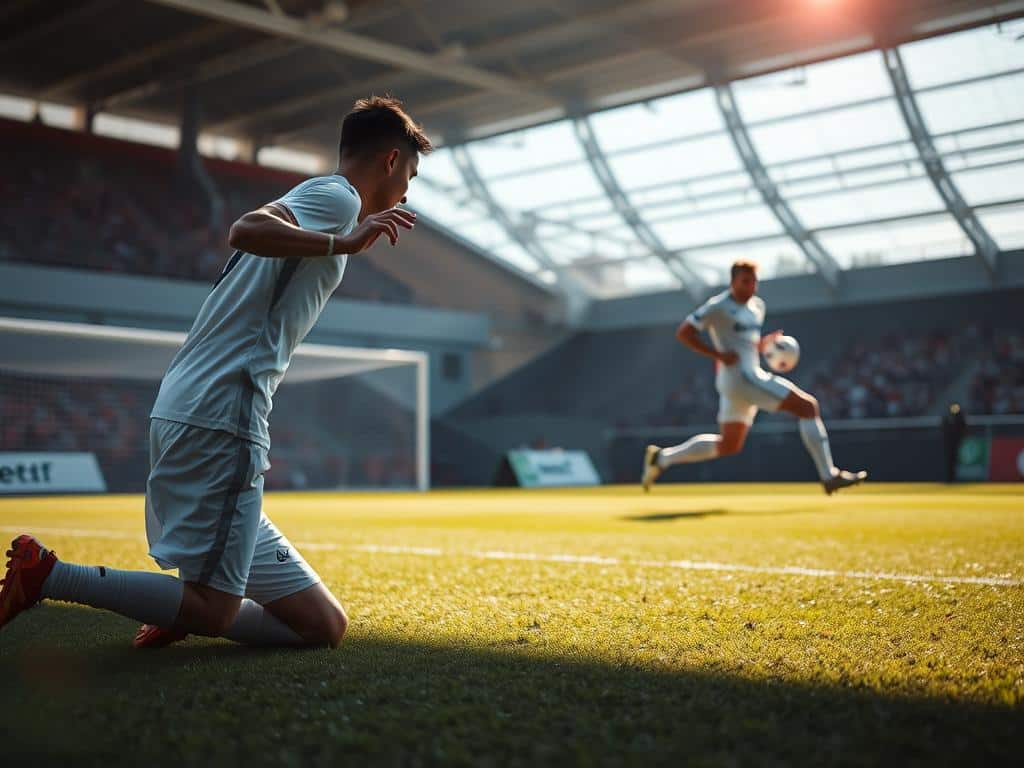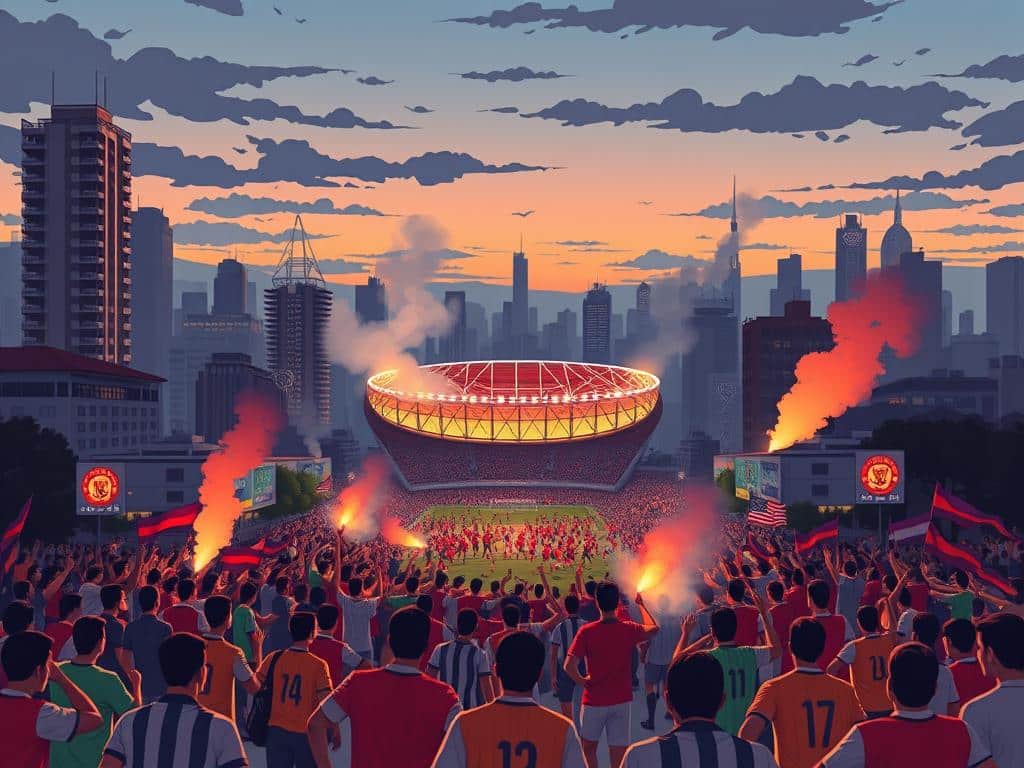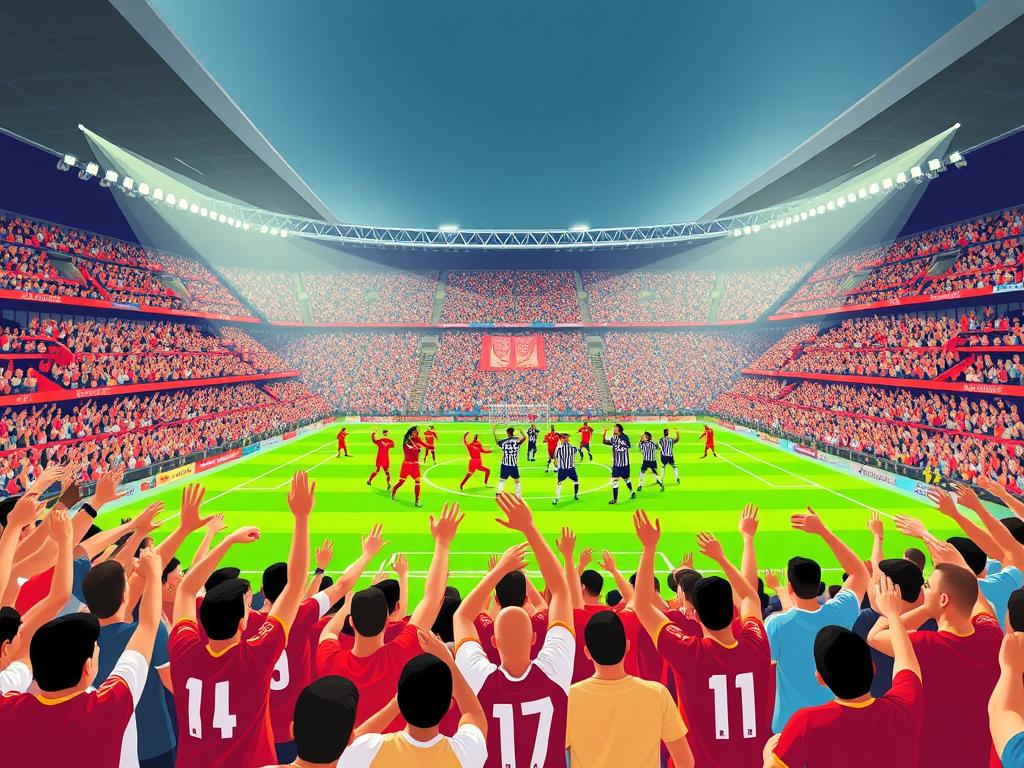You want to master counter attacking tactics in soccer so you can flip tight matches with one swift move. This approach shows how quick transitions can punish overcommitted defenses and change momentum fast.
Proven at elite levels: 14% of FA Cup goals in 2020/21 came from these plays, proving the value of rapid breaks. Teams that nail the timing win the vital moments.
We’ll look at clear principles and real examples from top sides like Liverpool, Real Madrid, and Leicester City. You’ll see how a smart setup helps a team convert defense into an instant attack.
By the end you’ll know the roles, drills, and small habits that create repeatable success. Ready to refine your plan and make quick transitions a core part of your match day play?
Key Takeaways
- Quick, disciplined transitions create high-value chances.
- Speed of movement, precise passing, and full commitment are the three core principles.
- Study elite examples to learn role-specific actions for each position.
- Training drills and constraints teach players to act fast under pressure.
- Small tactical tweaks in setup and goalkeeper distribution boost success on the break.
What Is a Counter Attack and Why It Wins Games
A counter attack is a lightning-fast move that turns a defensive moment into a scoring chance. It happens at the instant your side regains possession and the opponent is momentarily exposed.
Why it works: the opposition has lost shape, leaving space behind and between lines. Seconds count: a forward, accurate first pass sets the play. Runners then flood the field toward those open lanes while the opponent scrambles to recover.
Elite football has shifted. The 2018 FIFA World Cup Technical Report noted counters must be faster and more precise today. Your team moves from compact defence to explosive attack with one or two purposeful touches.
- Win the ball, play forward quickly, exploit space before the opponent resets.
- The ball moves first; runners follow into corridors that the opponent leaves open.
- Key skills: clean first touch, head-up scanning, and fast decision-making at the moment of transition.
| Phase | Action | Why it matters |
|---|---|---|
| Regaining possession | Immediate forward pass | Busts defensive shape and creates space |
| Transition | Runners attack lanes | Exploits gaps before opponents reorganize |
| Finish | One or two touches to goal | Keeps play direct and unpredictable |
| Practice focus | First touch, scanning, decision speed | Builds repeatable advantage during games |
The Three Core Principles of a Successful Counter
When a team wins the ball, the next three seconds decide whether a break becomes a real chance. Quick choices matter. Clear roles matter. Do you want repeatable success? Then these three principles are non-negotiable.
Speed of movement
Explosive movement starts the moment possession is regained. The first three seconds are everything. Go vertical and keep tempo high.
Passing precision
At full speed, one errant pass kills the sequence. Weight the ball into space, not to feet. Two or three forward passes max; keep it simple.
Dedication and commitment
Every player sprints. The carrier, the wide support, the back-post runner—everyone must back the play. Your player on the ball must scan early and drive forward.
- Speed: immediate, vertical movement after turnover.
- Passing: accurate, forward-first options into lanes.
- Players: full commitment to support the attack.
Bottom line: With organized defenses improving, counters must be faster and more precise. Apply these principles and you build a successful counter that works in modern football.
Reading the Moment: Recognizing When to Break
Spotting the exact second to strike separates good teams from great ones. You must read the field fast. Look for a clear moment when opponents are stretched and lanes appear.
Scan before you commit to a tackle. If you anticipate regaining possession, your first touch into space should be automatic. Ask: is the opponent unbalanced? Are there open lanes? Are bodies ahead of the ball?
- Green lights: fullbacks high, midfielders beyond the ball, center backs split.
- Pick the lane: wide for open wings, middle for central gaps, opposite flank for quick switches.
- Transition with intent: first runner creates depth, second gives width, third attacks the box.
| Cue | Sign | Action |
|---|---|---|
| High fullbacks | Space behind | Play vertical into wide channel |
| Midfield advanced | Middle clear | Drive through central corridor |
| Opponents compact | Lane blocked | Secure one pass, then break |
Communicate the trigger — shout “Go!” so the unit moves together. Practice this reading habit until regaining possession produces the same forward-first behavior every time.
Timing and Speed: The Two Pillars of Quick Transition
The instant you win the ball, timing and pace start the race. If you delay, the window slams shut.
Timing is everything: the gap between regaining possession and your first forward pass should be measured in heartbeats. Move the ball early to catch opponents off balance.
Speed of thought matters as much as legs: scan before the challenge so the next action is automatic. That mental quickness makes a counter attack start with the first touch.
- Build pace into simple patterns—one-touch layoffs, third-man runs, and direct passes into lanes.
- Use possession pragmatically: hold the ball only to accelerate it. One safe touch can set an effective counter at full stride.
- Choreograph transitions: designate who runs beyond, who holds central depth, and who pulls wide to open channels.
- Play the clock: when opponents press late, their risk rises. Your speed punishes that gamble.
Train tempo shifts so the team flips from compact to explosive without hesitation. Want to go deeper on reaction and decision speed? Read this piece on why reaction time is crucial.
Roles and Responsibilities by Position in the Counter
Roles on the pitch define how quickly a regained ball turns into a real chance. Assign clear tasks and everyone moves with purpose. Ready to see who does what?

Wide players: stretch and attack channels
Wingers must get chalk on their boots. Attack channels early and receive on the move to beat retreating fullbacks.
Use width to pull defenders wide and open lanes for quick switches. Stay alert and take the first touch forward.
Midfielders: first touch, vision, and speed
Midfielders must receive and release at pace. A forward first touch, head up, and a sharp pass unlocks the break.
Your vision and decision speed make the play work. Be the connector who sees runs and feeds them.
Strikers: timing runs and keeping the edge
Strikers time runs across or beyond the last line. Occupy center backs and finish with conviction.
Keep the numerical advantage by holding separation and reading when to check short or attack depth.
- The player on the ball accelerates into open grass; support arrives on staggered lines.
- One stays central as a wall pass, one runs the opposite channel, one hits the box late.
- Key skills: scanning, first-touch into space, and calm finishing at full speed.
| Position | Primary Duty | Key Skill |
|---|---|---|
| Wide player | Stretch play; attack channels early | Receive on the move |
| Midfielder | Receive and release quickly | Vision & first touch |
| Striker | Time runs; hold numerical edge | Separation & finishing |
| Support player | Provide staggered angles; keep play alive | Positioning & simple passing |
Creating and Exploiting Numerical Advantage
Turn numbers into goals: small advantages on the break win matches. When the opponent overloads your half, one accurate release can create 3v2s or 5v3s on the run.
Spot the moment early. If four defenders face five of your players, attack the weaker side at pace and force a frantic recovery.
Drive the ball into the free player’s lane. Commit a defender, then release. That sequence yields clear, create goal-scoring chances fast.
- Go fast enough to deny cover—pace narrows defenders’ options and amplifies your advantage.
- Use a wide pull: your winger drags a center back, your 9 pins the other, your arriving 10 finishes across the grain.
- If the opponent shifts, recycle forward—keep the break alive with one more forward action.
| Scenario | Action | Why it works | Result |
|---|---|---|---|
| 3v2 on the flank | Drive at the free lane | Creates overlap and forces a cover | Higher shot quality |
| 5v3 through middle | Fast vertical pass + late runner | Outnumbers central defenders quickly | Tap-ins or cutbacks |
| Weak-side overload | Switch then back-post run | Defender shift leaves space | Unmarked finish |
Ball Progression Patterns: Direct, Diagonal, and Through the Middle
Patterned ball movement sets the rhythm for every fast break your team runs. Pick a clear pattern and your players know where to move, who to target, and when to speed up.
Use three primary progressions: long balls to bypass heavy pressure, diagonal switches to hit weak-side runners, and sharp vertical passes to split lines into open field.
- Direct pattern: win it, long ball into the channel, then chase. Works best when center backs are high and gaps appear.
- Diagonal switch: draw pressure one side, rip it to the far wing for a 1v1 or a cross. This play punishes slow shifts.
- Through the middle: incisive vertical passing to a dropping forward or a third-man run. Simple, ruthless, repeatable.
| Pattern | Trigger | Purpose |
|---|---|---|
| Direct | High CB line | Bypass pressure; gain yards fast |
| Diagonal | Wide overload | Create far-side 1v1 into the box |
| Middle | 6 vacates lane | Split lines; enter open field |
Teach runs that match the pass: near-side drags, far-side finishes, and late runners for cutbacks. Keep play clean — one-touch layoff, two-touch max. Mix these moves so the counter attack stays unpredictable and effective.
Elite Examples: How Top Teams Execute Counters
Elite sides make swift recoveries look simple and deadly. Watch three teams that turned rehearsed transitions into decisive moments. You can learn patterns, runs, and the timing that wins games.
Liverpool’s rapid transitions and forward runs
What stands out: instant vertical passes and relentless forward runs from wide and central lanes. Players sprint to second balls and feed the striker quickly.
Real Madrid’s quick decision-making and long passing
What stands out: a calm carrier who makes split-second choices and picks long passes that spring runners behind the last line. Speed of thought meets accurate delivery.
Leicester City under Ranieri: pace, space, and surprise
What stands out: elite pace, perfect spacing, and ruthless finishing. Ranieri’s side punished opponents by exploiting sudden spaces and striking with cold feet.
Across these examples, notice common skills: scanning before regaining, a first touch into space, and one-touch releases under pressure. Teams drill transitions daily so these attacks become instinctive.
| Team | Key Feature | Primary Skill | Effect in Game |
|---|---|---|---|
| Liverpool | Rapid vertical passes | Forward runs & second-ball aggression | High-quality break chances |
| Real Madrid | Long, accurate switching | Quick decision-making | Runners behind defence |
| Leicester (Ranieri) | Blitz pace and spacing | Finishing under pressure | Surprise goals from space |
| Lesson for you | Design repeatable patterns | Drill transitions daily | Make fast attacks automatic |
Video Breakdown: Belgium vs Japan World Cup Counter
A ten-second sequence can teach you everything about tempo, roles, and ruthless finishing. Watch how a routine defensive moment became a textbook counter attack and a goal within moments.
Goalkeeper distribution, middle-channel drive, and final-third execution
Start: Belgium defend a corner, the keeper secures the ball and rolls it into space. That clean distribution begins the transition and saves precious seconds.
- The roll meets Kevin De Bruyne on the run through the middle channel. He receives forward, not to feet, so pace is preserved.
- Four teammates explode upfield. Wide options stretch the defence, central runners fill lanes, and a late runner targets the cutback zone.
- The move creates a clear numerical advantage — roughly a 5v3 — before opponents can reorganize on the field.
- De Bruyne releases a precise pass wide; the final-third execution is a neat cutback and finish. Ten seconds from save to goal.
| Phase | Action | Why it worked |
|---|---|---|
| Regaining possession | Keeper roll into space | Preserves pace; starts the break |
| Transition | Middle drive + wide support | Creates lanes and overloads defence |
| Finish | Wide pass and cutback | High-percentage final touch, goal |
Why study this clip? It shows how regaining possession, fast transition, and clear choices create openings. Teach your team the same cues: goalkeeper distribution, middle drive, wide support, and a ruthless final pass.
Goalkeeper’s Role in Starting and Stopping Counters
A modern keeper is less a shot-stopper and more a launchpad for quick moves. Do you want your keeper to turn saves into chances? Their role is vital to any fast transition.
Catch, scan, and decide. A quick roll or a sharp throw into a running lane preserves pace and gives your team the first advantage. Accurate distribution of the ball wins yards fast.
Positioning matters. A higher starting spot shortens delivery time to midfield runners and helps halt opposition breaks before they grow. Communication is a defensive weapon—shout outlets, mark runners, and set cover.

- Build possession with purpose: if the quick counter attack is closed, play short to draw defenders and then spring the wide runner.
- Shot-stopping meets sweeping: read through balls behind a high line and stop threats early.
- Train decision trees: coaches should drill catch-and-go, punch-and-clear, or hold-and-reset based on numbers and pressure.
| Action | Why it matters | Skill focus |
|---|---|---|
| Quick roll/throw | Saves time; starts transition | Distribution & vision |
| Higher starting position | Shorter delivery to midfield | Awareness & positioning |
| Organize defence | Prevents second-phase overloads | Communication & reading triggers |
Set-Piece Scenarios: Turning Defense on Corners into Attack
Defending a corner can flip to a swift scoring chance if your unit reacts the right way.
Corners are gold for quick breaks. Lots of opposition bodies forward means space behind them. If your defenders win the first contact, one clean outlet can create a numerical advantage on the run.
Assign simple roles so everyone knows the job the moment the ball is cleared. One runner goes wide, one drives through the middle, one stays as a safety valve. If your keeper claims, release the ball early into stride. If you clear, angle headers into a runner’s path.
- Train the near-post flick and far-post outlet as set triggers.
- Keep two fast players high to pin opponents and stop short corners.
- After regains possession, sprint patterns must be automatic — don’t hesitate.
Defend first, then attack. Clear the danger, then punish the exposed defence while the opposition reorganizes. Practice rest-defense so second balls are absorbed without killing the break.
| Scenario | Immediate Action | Expected Benefit |
|---|---|---|
| Keeper claims | Quick roll or throw into stride | Preserves pace; creates 3v2 or 4v3 |
| Header clearance | Angle into running lane | Maintains forward momentum |
| Short corner prevented | Two players high; outlet ready | Stops reset; forces wide shift |
| Second ball situation | Rest-defense then immediate outlet | Absorbs pressure; restarts fast break |
Team Shape and Best Formations for Counter Attacks
Smart defensive shape creates the outlets that make transitions deadly. Pick a formation that matches your players and the way you want to move the ball after a turnover.
Compact defence, quick outlets, and channel occupation
Compact defence first: narrow lines deny half-spaces and force the opponent wide. That creates clear lanes for an immediate release.
Formations matter. A 4-4-2 or 4-5-1 gives solidity and two clear outlets for fast strokes. Use a 4-3-3 when you want wide runners. Try a 3-5-2 if wingbacks provide both cover and thrust.
- Your position principles beat numbers—stagger midfield and keep one high runner ready.
- Possession isn’t the aim; purposeful transitions are. Win, release, and run.
- Occupy channels: first pass gives width, second pass gives depth. Space opens when timing is right.
- Coaches: design rest-defence so you can protect against an immediate reply while staying a threat on the break.
| Formation | Strength | Best use |
|---|---|---|
| 4-4-2 | Two strikers, balance | Classic breaks with direct runners |
| 4-3-3 | Wide pace | Stretch play and fast wing runs |
| 3-5-2 | Wingback thrust & central cover | Overload flanks and protect the middle |
Use the field smartly: invite pressure one side, break to the other, or pierce the middle when it shows. That simple discipline turns shape into goals on the fast break.
How to Train Counter Attacks in Team Practice
Practice sequences that mimic game chaos so players act right after a regain. Use short, repeatable drills that force quick choices and fast movement. The goal is to make the next forward pass automatic.
Defend-to-attack transition drills and two-touch constraints
Install two-touch rules in small-sided games. Players must think forward and move the ball faster after a regain. One-touch layoffs and a second pass max teach precision under pressure.
Counter-press triggers and regaining possession cues
Drill counter-press triggers: first five seconds to win it back, then explode forward when possession flips. Coaches should script wave drills—3v2 to 4v3 to 5v4—so numbers and angles feel automatic.
- Train long switches and diagonal passes to cut lines quickly.
- Track possession regains and time-to-shot to measure progress.
- Highlight scanning before a challenge and first touch into space.
Finishing under speed to create goal-scoring chances
Finish drills must mirror the fast break: arrive at pace, one extra pass max, and finish low across the keeper. Add a defence attack phase to every defensive drill—win it, break, score—so players expect the next action.
| Drill | Focus | Coach action |
|---|---|---|
| 2-touch small-sided | Tempo & decisions | Enforce touch limits |
| Wave overloads | Numbers & angles | Rotate roles quickly |
| Finishing at speed | Composure & placement | Set realistic time targets |
Bottom line: consistent training builds the skills and speed needed for an effective counter. Keep drills sharp, measurable, and game-like so the whole team reacts the same way after every regain.
Defending Against the Counter: Tactics for Coaches
Preventing quick breaks starts long before the turnover — it begins with how you shape the team under pressure. Set simple rules so every player knows their role when possession is lost.
Compactness, recovery runs, and protecting central spaces
Stay compact between lines. Make opponents play around you, not through you. That slows the opposition and forces low-value options.
On loss of possession, sprint recovery runs to protect the center first. Force the opposition wide, then delay their progress.
Assign rest-defense roles: two holding players plus a covering fullback behind the ball when you attack. Don’t send both fullbacks high without balance.
Goalkeeper positioning and communication on transition
Your goalkeeper’s starting position matters. A smart keeper shortens the opponent’s first pass and can erase space with quick communication.
Coaches: rehearse set-piece coverage with immediate prevention plans. Mark outlets, track runners, and coach winning the second ball.
- Control central zones where counters start — central turnovers are most dangerous.
- Use training blocks for negative transition to hardwire recovery habits.
- Protect the field’s core first, then regain calm possession to restart play.
| Threat | Immediate Action | Coach Focus |
|---|---|---|
| Central turnover | Shield lane; force wide | Recovery sprint drills |
| High fullbacks | Hold one back; cover | Positional balance in training |
| Set-piece clear | Mark outlets; win second ball | Rehearse roles and cues |
counter attacking tactics in soccer: Step-by-Step Game Plan
Turn every regain into a clear plan: act fast, aim forward, and finish before opponents regroup. This practical blueprint converts regains into chances with minimal passes and maximum forward pace.
Win the ball, play forward early, attack space, finish fast
Keep actions simple and rehearsed. Clean first touches matter. Quick decisions beat clever ones when seconds count.
- Regain possession: anticipate, tackle cleanly, and move the ball immediately.
- First look forward: if a runner is on, play early; if not, secure with one touch and release on the second.
- Runs decide everything: one down the line, one through the middle, one arriving late for the cutback.
- Attack the biggest gap: commit at pace; don’t veer wide if the central lane is open.
- Two passes max: keep it ruthless and direct to create goal-scoring chances quickly.
- Final-third moves pre-planned: square across the six, near-post poke, or top-of-box pullback.
- Reset rest-defense: reorganize even while celebrating so the team is ready for the next wave.
| Step | Action | Why it works |
|---|---|---|
| Regain possession | Immediate forward pass | Preserves momentum and punishes disorganized opponents |
| Early runner | Play into stride | Keeps pace and creates separation |
| Finish fast | Two passes max; decisive shot | Reduces opponent recovery time; higher chance quality |
This is counter attack made practical: simple, repeatable moves your team can run every weekend to create goal-scoring opportunities.
Common Mistakes and How to Avoid Them
Simple mistakes at the moment of play are why good moves fail to become goals. You can fix most of them with clear cues and focused training.
- Mistake — waiting on the ball: pre-scan and attack the lane immediately to beat opponents to space.
- Mistake — too many touches: enforce one- and two-touch play so movement and timing create the chance.
- Mistake — flat support: angle runs to open diagonal passing lanes and third-man options.
- Mistake — wrong moment: teach tells like high fullbacks or an exposed 6 and go on cue.
- Mistake — forcing wide: attack the nearest big gap first; don’t ignore a clear middle route.
- Mistake — poor final pass: train cutbacks and across-goal deliveries at match speed.
- Mistake — skipping recovery: after a shot secure second balls or delay play to stop quick replies.
Build lasting success through training that mirrors match pressure, distance, and speed. Practice these fixes until every player reacts the same way. That habit turns sporadic chances into repeatable success for your team and improves overall football performance.
| Mistake | Immediate Fix | Drill |
|---|---|---|
| Waiting on ball | Pre-scan; play early | Quick outlet sprints with pass-and-go |
| Too many touches | One/two-touch rule | 2-touch small-sided games |
| Flat support | Angle runs | Diagonal passing patterns |
| Poor final pass | Practice cutbacks | Finish-from-speed exercises |
Conclusion
Train clear triggers and your team will turn brief chaos into clear goals. Make transitions habitual: win the ball, release early, run in numbers, and finish with purpose. That short recipe creates real success on match day.
Coaches must bake these moments into every training block. Track simple metrics — time-to-first-pass, time-to-shot, and runners in the box — and measure progress weekly.
Players: own your role, scan before contact, and commit to the run. When teams sprint into space first, the scoreboard follows. Master the patterns and the effective counter becomes your identity on every game day.







